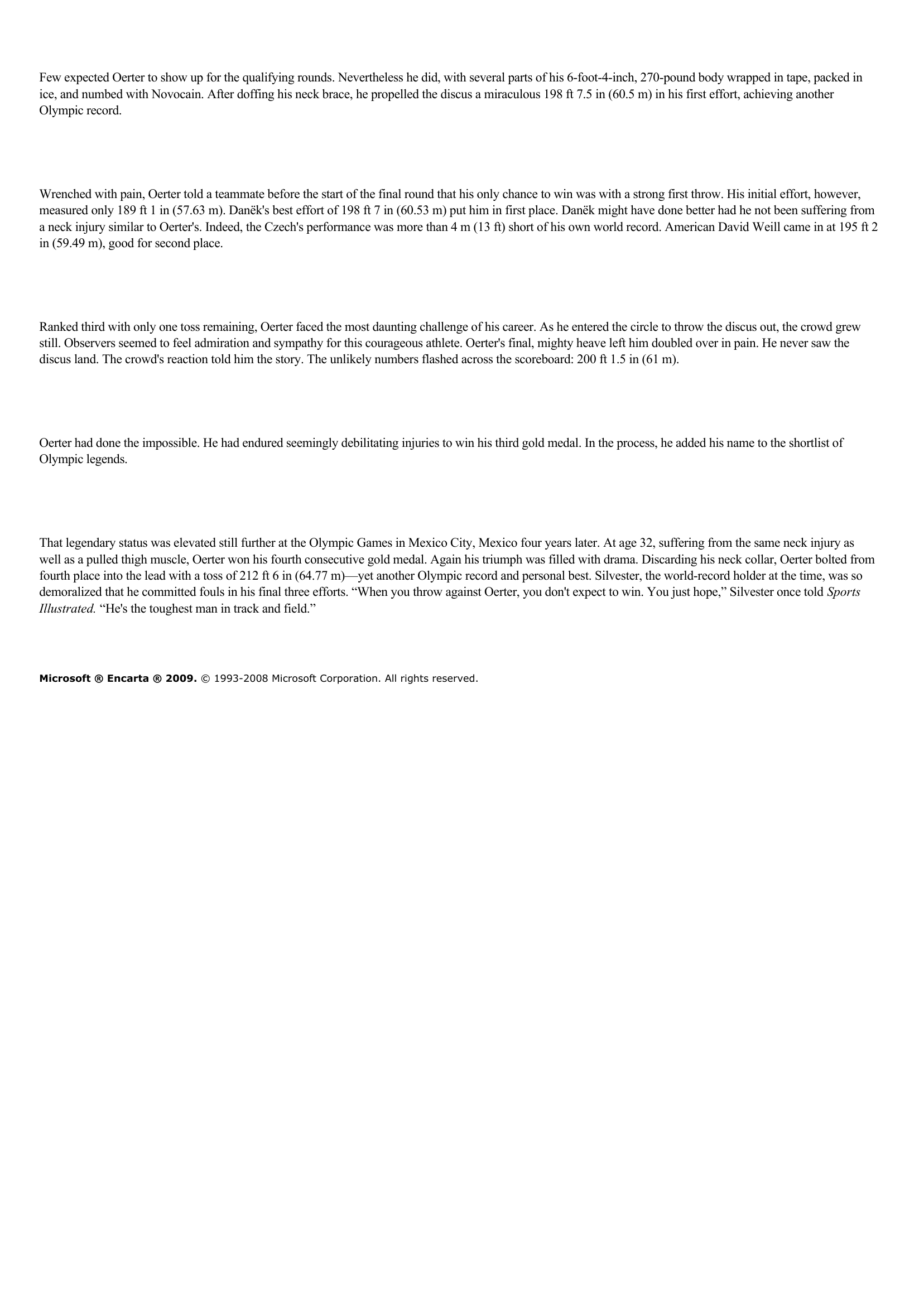Oerter Wins Third Gold Medal.
Publié le 14/05/2013

Extrait du document
«
Few expected Oerter to show up for the qualifying rounds.
Nevertheless he did, with several parts of his 6-foot-4-inch, 270-pound body wrapped in tape, packed inice, and numbed with Novocain.
After doffing his neck brace, he propelled the discus a miraculous 198 ft 7.5 in (60.5 m) in his first effort, achieving anotherOlympic record.
Wrenched with pain, Oerter told a teammate before the start of the final round that his only chance to win was with a strong first throw.
His initial effort, however,measured only 189 ft 1 in (57.63 m).
Danëk's best effort of 198 ft 7 in (60.53 m) put him in first place.
Danëk might have done better had he not been suffering froma neck injury similar to Oerter's.
Indeed, the Czech's performance was more than 4 m (13 ft) short of his own world record.
American David Weill came in at 195 ft 2in (59.49 m), good for second place.
Ranked third with only one toss remaining, Oerter faced the most daunting challenge of his career.
As he entered the circle to throw the discus out, the crowd grewstill.
Observers seemed to feel admiration and sympathy for this courageous athlete.
Oerter's final, mighty heave left him doubled over in pain.
He never saw thediscus land.
The crowd's reaction told him the story.
The unlikely numbers flashed across the scoreboard: 200 ft 1.5 in (61 m).
Oerter had done the impossible.
He had endured seemingly debilitating injuries to win his third gold medal.
In the process, he added his name to the shortlist ofOlympic legends.
That legendary status was elevated still further at the Olympic Games in Mexico City, Mexico four years later.
At age 32, suffering from the same neck injury aswell as a pulled thigh muscle, Oerter won his fourth consecutive gold medal.
Again his triumph was filled with drama.
Discarding his neck collar, Oerter bolted fromfourth place into the lead with a toss of 212 ft 6 in (64.77 m)—yet another Olympic record and personal best.
Silvester, the world-record holder at the time, was sodemoralized that he committed fouls in his final three efforts.
“When you throw against Oerter, you don't expect to win.
You just hope,” Silvester once told Sports Illustrated.
“He's the toughest man in track and field.”
Microsoft ® Encarta ® 2009. © 1993-2008 Microsoft Corporation.
All rights reserved..
»
↓↓↓ APERÇU DU DOCUMENT ↓↓↓
Liens utiles
- Ali Wins Olympic Gold Medal.
- Blankers-Koen Wins Fourth Gold Medal.
- Owens Wins Four Gold Medals.
- Brazil Wins Third World Cup In Soccer.
- Evans Wins Gold.

































